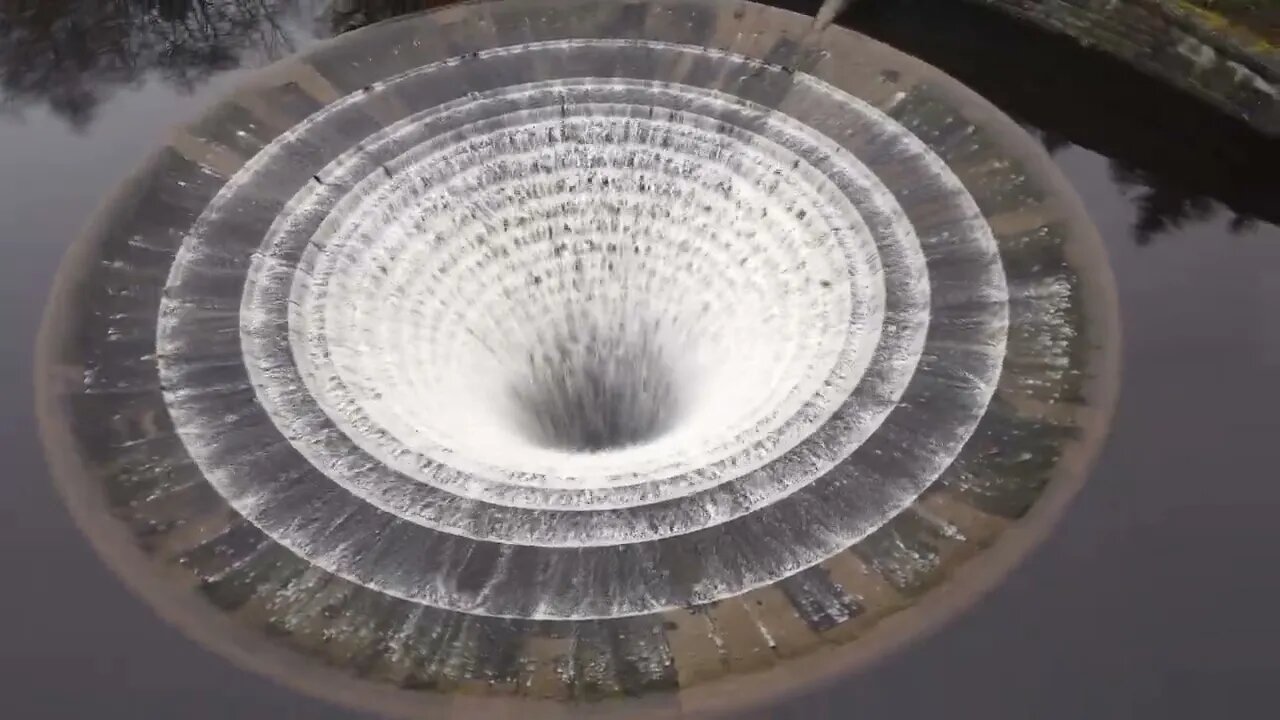Premium Only Content

THIS THING NEARLY SWALLOWED MY DRONE - foggy day on Ladybower
Music from Uppbeat (free for Creators!):
https://uppbeat.io/t/luke-moseley/reflection
License code: JWL5HOKXDSKMEBNR
MY LINK
https://uppbeat.io?referral=david-v6m3q
Ladybower was built between 1935 and 1943 by the Derwent Valley Water Board to supplement the other two reservoirs in supplying the water needs of the East Midlands. It took a further two years to fill which was done by 1945. The dam differs from the Howden Reservoir and Derwent Reservoir in that it is a clay-cored earth embankment and not a solid masonry dam. Below the dam is a cut-off trench 180 feet (55 m) deep and 6 feet (1.8 m) wide filled with concrete, stretching 500 feet (150 m) into the hills each side, to stop water leaking around the dam. The dam wall was built by Richard Baillie and Sons, a Scottish company. The two viaducts, Ashopton and Ladybower, needed to carry the trunk roads over the reservoir, were built by the London firm of Holloways, using a steel frame clad in concrete. The project was delayed when the Second World War broke out in 1939, making labour and raw materials scarce, but construction was continued due to the strategic importance of maintaining supplies. King George VI, accompanied by his wife, Queen Elizabeth, formally opened the reservoir on 25 September 1945.
The building of the reservoir resulted in the submergence of the villages of Ashopton and Derwent, including Derwent Woodlands church and Derwent Hall. Ashopton stood roughly where the road to the Snake Pass met the Snake valley. The buildings in Ashopton were demolished before the reservoir was filled, but much of the structure of Derwent village was still visible during a dry summer some 14 years later. The narrow stone Packhorse Bridge over the Derwent was removed and rebuilt at the head of the Howden reservoir. The clock tower of the church had been left standing and the upper part of it was visible above the water level until 1947, when it was seen as a hazard and demolished with explosives on 15 December.
In 1976, 1995, and 2018, dry conditions caused the water level to drop and the village of Derwent to once again be exposed. In 2018, this caused unprecedented crowds to visit the rarely visible site. On 3 November 2018, a man had to be rescued by a mountain rescue team after getting stuck in extremely thick mud around the ruins of the village. On 17 November 2018 it was reported that the site had been vandalised by some of those visiting, with park rangers forced to stop visitors removing items from the site and with graffiti scrawled on some buildings.
-
 UPCOMING
UPCOMING
BonginoReport
2 hours agoDan Bongino is Leaving (Ep.146) - 02/22/2025
16.6K30 -
 UPCOMING
UPCOMING
Wendy Bell Radio
3 hours agoThe MAGA Diet
3.21K8 -
 UPCOMING
UPCOMING
Graham Allen
56 minutes agoGRAHAM MAKES YUGE ANNOUNCEMENT!! + LIBERAL REP ROOTING AGAINST AMERICA?!
8291 -
![Massive Paradigm Shift: Bongino Hired At FBI; Joy Reid Fired At MSBNC [EP 4450-8AM]](https://1a-1791.com/video/fwe1/52/s8/1/u/2/_/e/u2_ey.0kob-small-Massive-Paradigm-Shift-Bong.jpg) LIVE
LIVE
The Pete Santilli Show
13 hours agoMassive Paradigm Shift: Bongino Hired At FBI; Joy Reid Fired At MSBNC [EP 4450-8AM]
3,819 watching -
 LIVE
LIVE
Game On!
12 hours ago $1.34 earnedAnother Monday without football...
972 watching -
 UPCOMING
UPCOMING
Jeff Ahern
30 minutes agoMonday Madness with Jeff Ahern (Ding Dong the Witch is Gone!)
-
 34:56
34:56
Athlete & Artist Show
20 hours ago $1.06 earnedCANADA WINS GOLD AGAIN!!
6.95K2 -
 15:27
15:27
TSPLY
22 hours agoCNN Forgets President Trump Can Fire Anyone He Wants From The Pentagon
6.72K12 -
 15:13
15:13
Clownfish TV
19 hours agoBluesky Trusts the Science? Scientists FLEEING X for Bluesky!
6.86K7 -
 29:50
29:50
The Finance Hub
14 hours ago $3.96 earnedBREAKING: TULSI GABBARD JUST DROPPED A MAJOR BOMBSHELL!!!
16.4K21